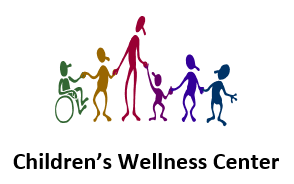Sweet blinking, cute head turning, grasping, and other movements all make new parents fall even deeper in love with their babies. What many parents don’t realize about their baby’s movements is that they are mostly involuntary. Up until about a year after birth, many of an infant’s movements are actually newborn reflexes.
What Are Newborn Reflexes?
Reflexes are involuntary muscle reactions that occur in response to a stimulus. You’re likely familiar with your adult reflexes, such as sneezing and yawning, coughing as a result of airway stimulation, automatically blinking when anything comes near your eyes, or automatically pulling your hand away from a hot stove.
Also called infant reflexes, newborn reflexes refer to a set of specific reflexes that are present at birth or developed during early infancy but which typically disappear with a baby’s development.
Key Newborn Reflexes and What They Mean
There are several different types of newborn reflexes, and learning to recognize them can help you better understand what your infant is experiencing.
Some of the primary infant reflexes include the following:
- Babinski Reflex – The Babinski reflex is characterized by an infant fanning out their toes in response to the sole of their foot being stroked.
- Grasp Reflex (Palmar Reflex) – The grasp reflex occurs when a baby tightly clasps their fingers around something that touches their palm.
- Moro Reflex (Startle Reflex) – The Moro reflex occurs when a baby is abruptly startled (by a loud noise or their head falling backward). The involuntary movement includes the quick outward extension of the arms, legs, and neck, followed by rapidly bringing the arms together and tucking in the legs.
- Plantar Reflex – Instead of stretching the toes outward, the plantar reflex has the toes curl inward around an object that touches the foot.
- Rooting Reflex – When an infant’s cheek is stroked, the rooting reflex turns the head toward the stroked cheek. This reflex helps babies learn to nurse. Rooting in a newborn is a feeding cue.
- Stepping Reflex – Held under the arms (with the neck and head supported), a baby will “walk” if their feet are placed flat on a surface. This reflex helps babies “crawl” their way to their mother’s breast for nursing when placed on the abdomen.
- Sucking Reflex – This reflex is so innate and so important for an infant’s survival that it is present even while a baby is still developing in the womb. The reflex causes a baby to place their lips around a nipple, compress the tissue between their hard and soft palates, move their tongue, and suck. Sucking or bringing the hand to the face are both feeding cues in newborns.
- Tonic Neck Reflex (Fencing Reflex) – When your baby turns their head to one side, the corresponding arm will straighten and the opposite arm will bend inward, resembling the posture of a sword fighter.
- Truncal Incurvation Reflex (Galant Reflex) – If you stroke or tap your infant’s back during tummy time, they will automatically shift or twitch their hips toward the side of their back you touched.
Recognizing the presence of infant reflexes, assessing reflex strength, and tracking the disappearance of newborn reflexes all provide ways to evaluate a child’s brain and nervous system development.
When Newborn Reflexes Disappear
Some infant reflexes stay around until about your baby’s first birthday, and others disappear more quickly, as your baby grows and develops.
The following estimates include the average time when each type of infant reflex tends to disappear.
- Babinski Reflex – 24 months
- Grasp Reflex – 5 to 6 months
- Moro Reflex – 2 months
- Plantar Reflex – 9 to 12 months
- Rooting Reflex – 4 months
- Stepping Reflex – 2 months
- Sucking Reflex – 4 months
- Tonic Neck Reflex – 5 to 7 months
- Truncal Incurvation Reflex – 4 to 6 months
The development and loss of infant reflexes are important developmental milestones for infants. It’s important for parents to be familiar with the different kinds of reflexes and what they can indicate, in addition to understanding how to recognize them and keeping track of when they appear and disappear from your infant’s movements.
When to Be Concerned About Newborn Reflexes
As your child’s nervous system develops, newborn reflexes should go away. If an infant doesn’t lose one or more of their newborn reflexes around the average expected time, this could be an indication of an issue with the child’s developing brain or nervous system. If you are concerned about your baby’s reflexes or want to learn more about developmental milestones to keep track of as your child grows, we encourage you to visit a pediatrician for an examination, evaluation, and professional guidance.
If you have any questions about newborn reflexes and your infant, please do not hesitate to contact us.

